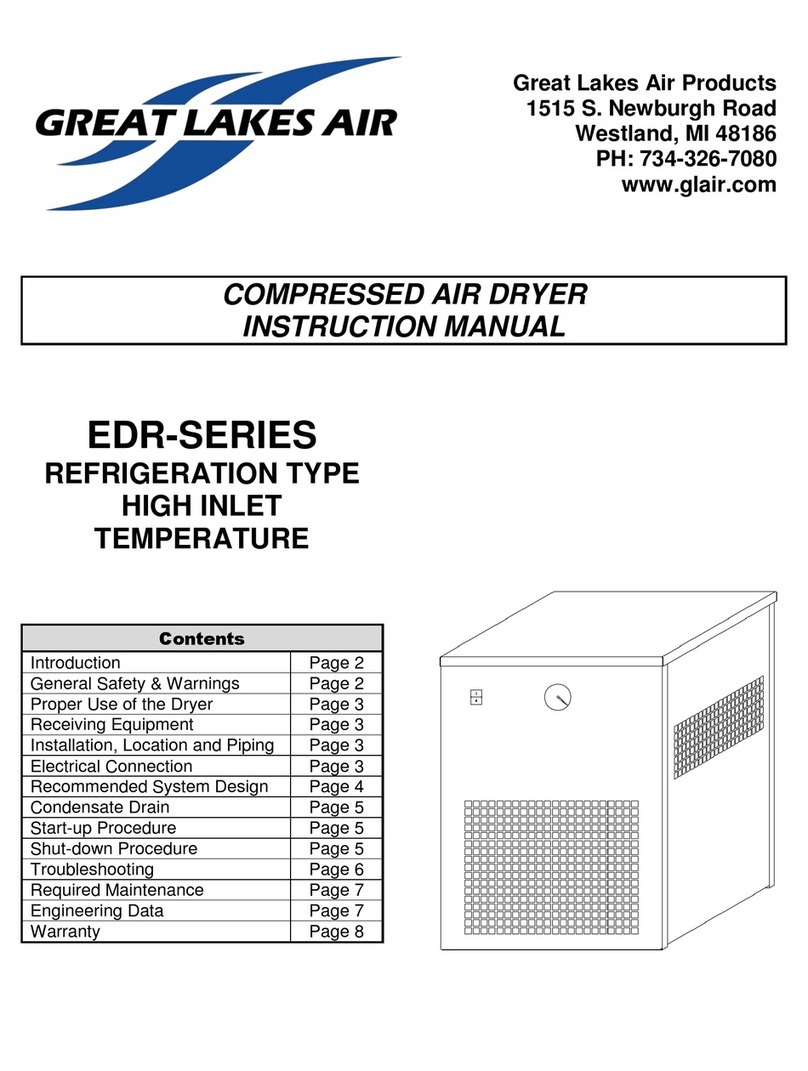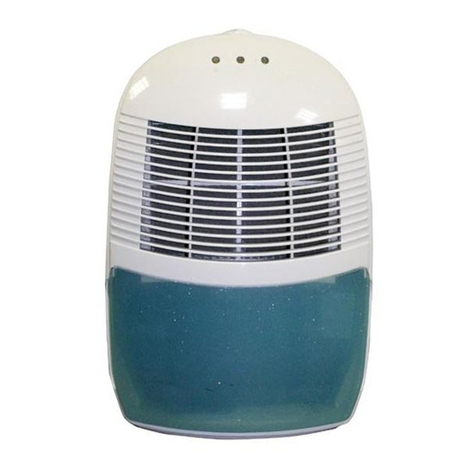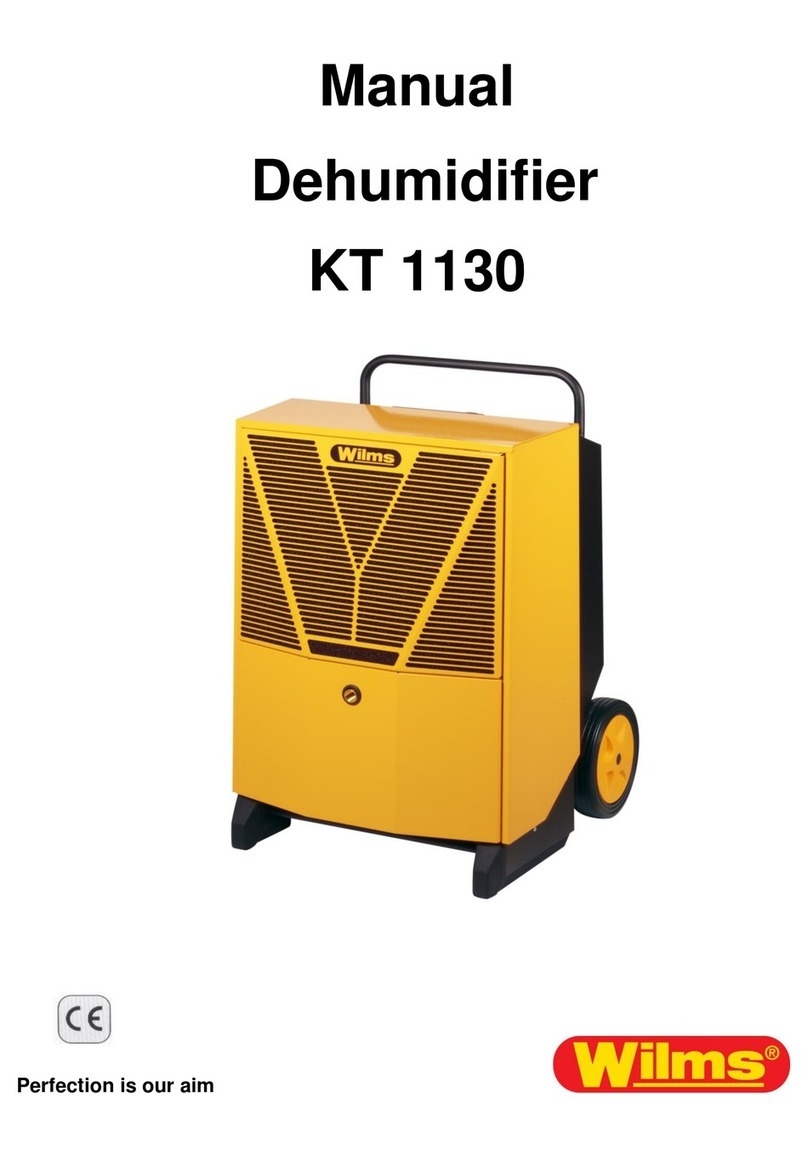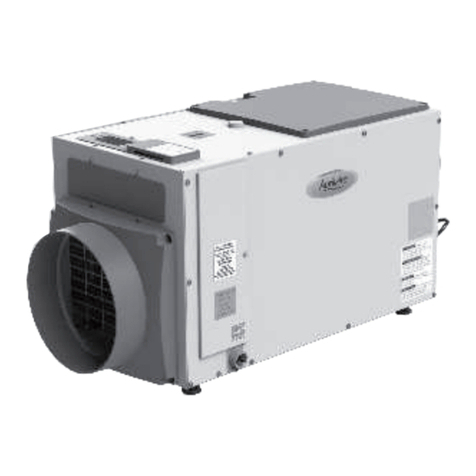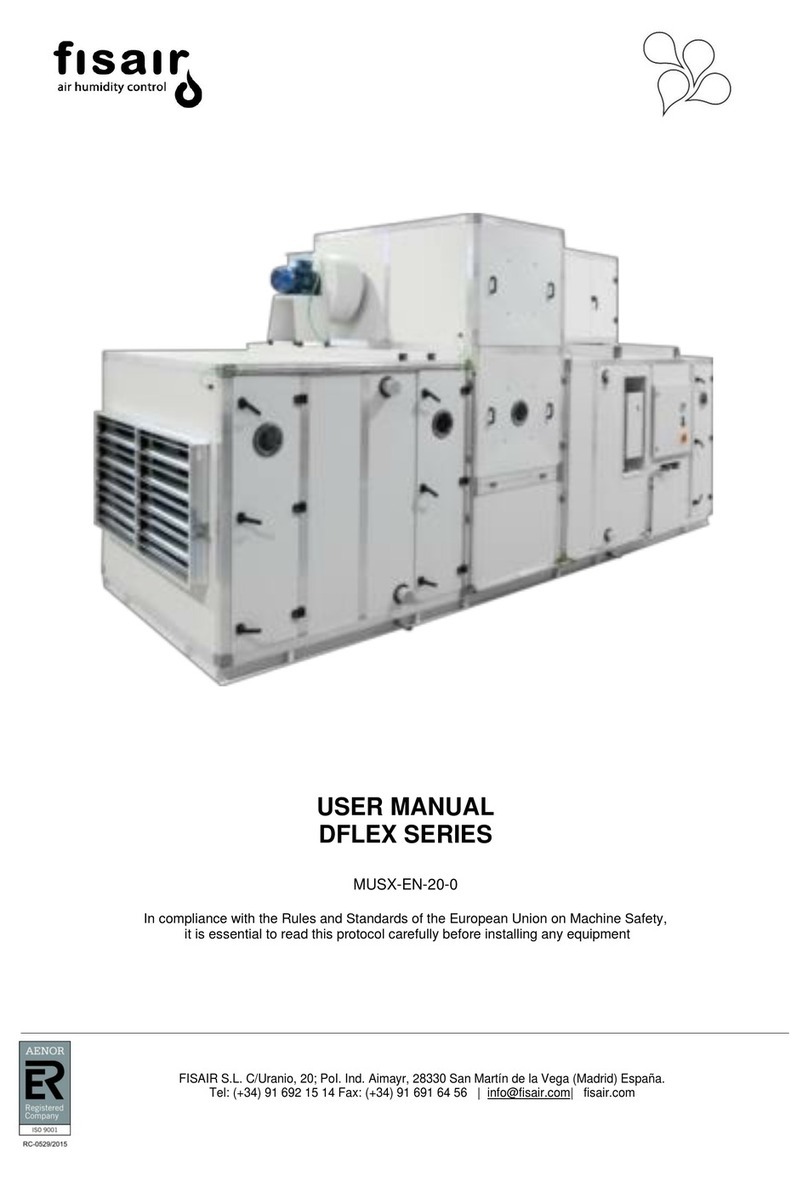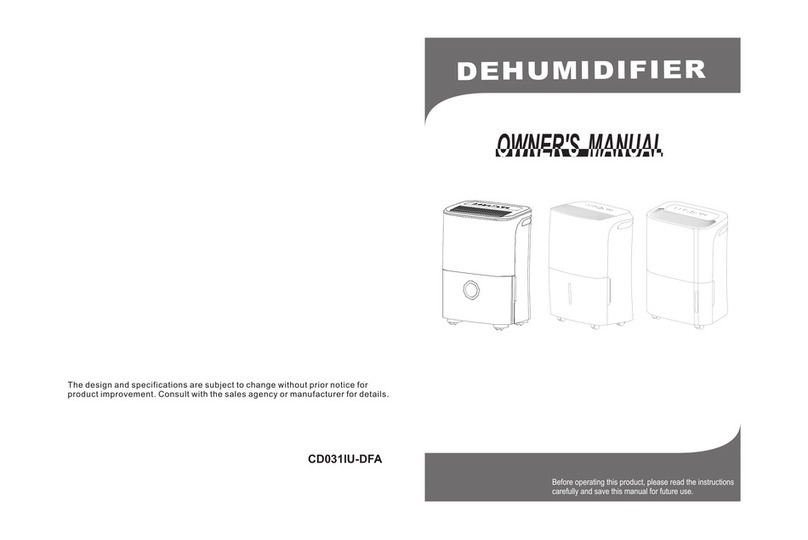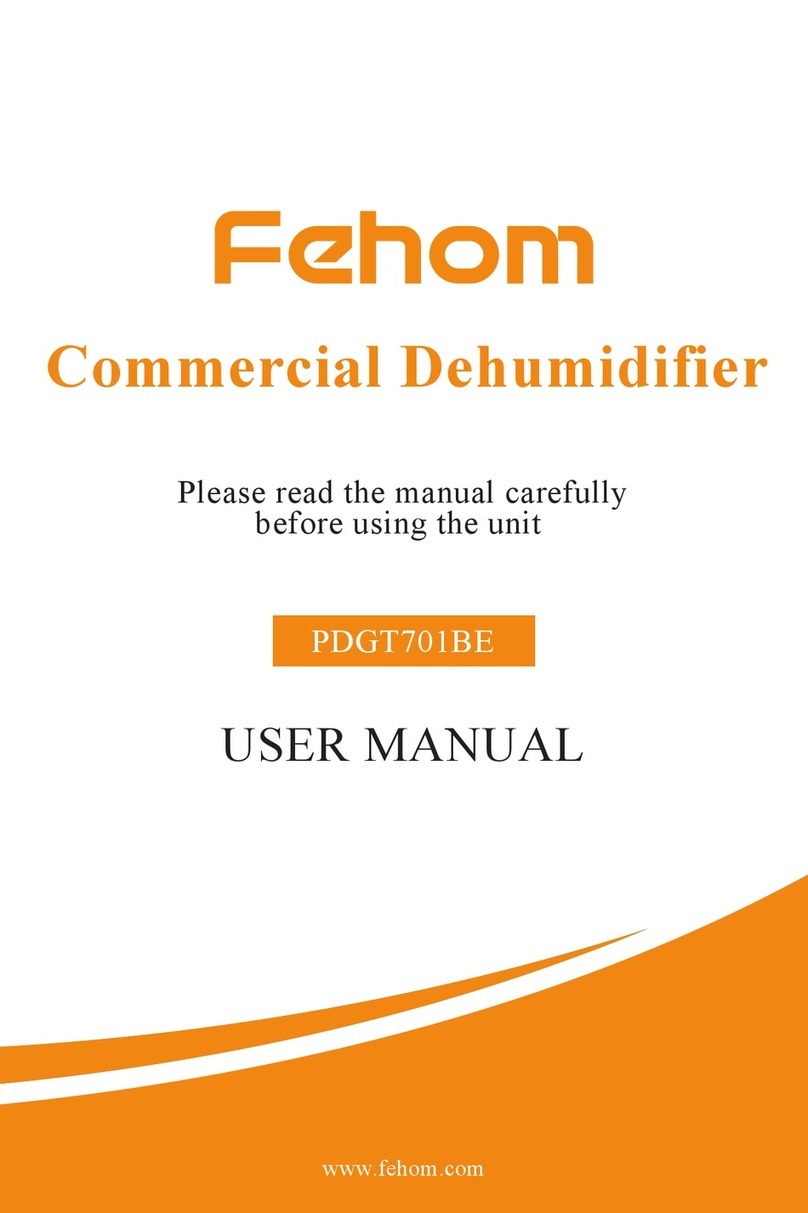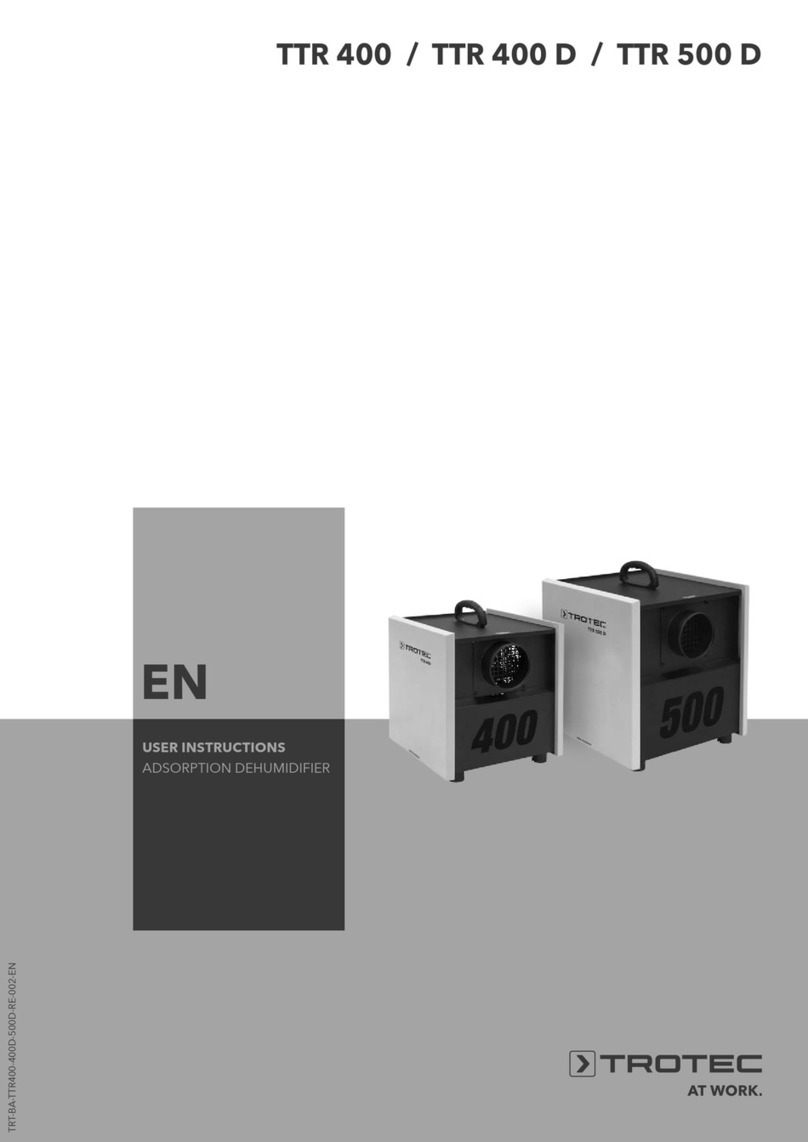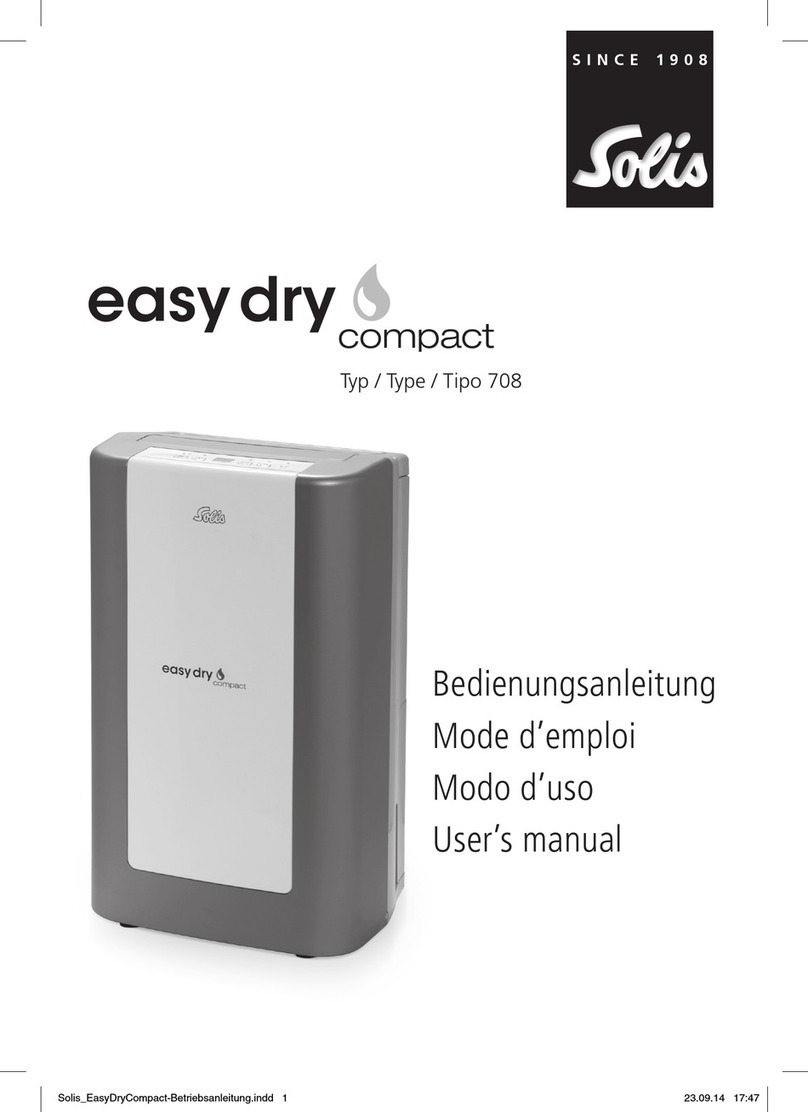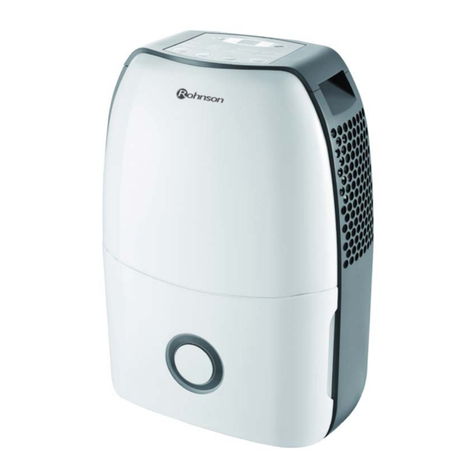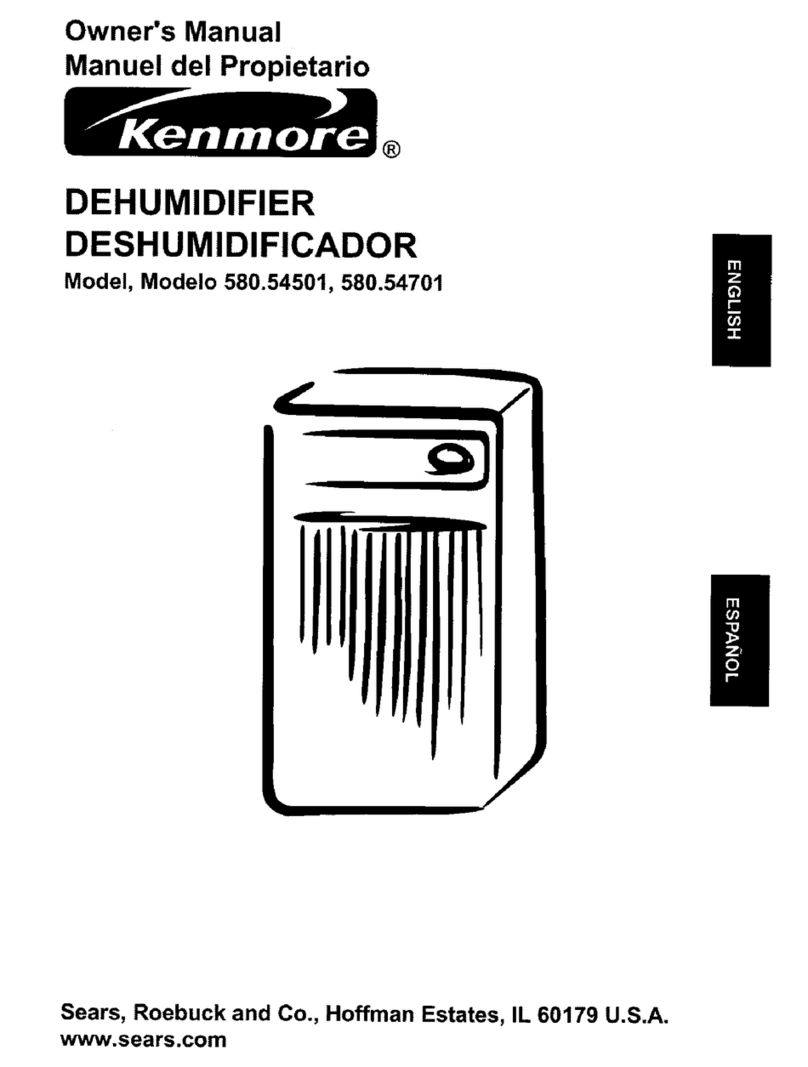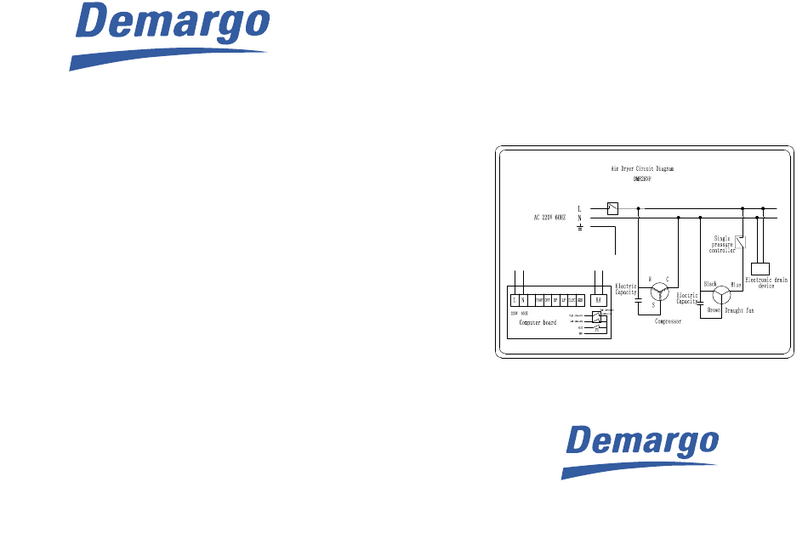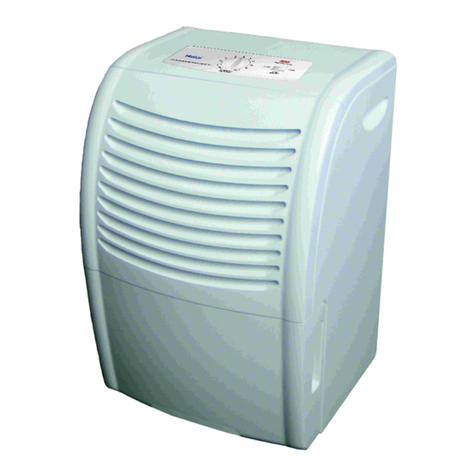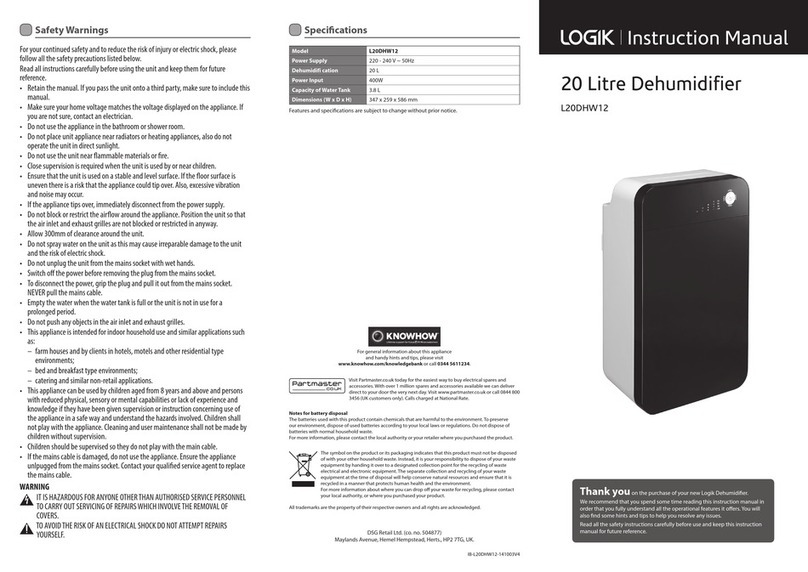Great Lakes Air Products GPS-500 User manual

Great Lakes Air Products
1515 S. Newburgh Road
Westland, MI 48186
PH: 734-326-7080
www.glair.com
COMPRESSED AIR DRYER
INSTRUCTION MANUAL
GPS-SERIES
HEATLESS
REGENERATIVE
DESICCANT DRYERS
Contents
Introduction
2
General Safety Information
2
Proper use of Dryer
3
Receiving Equipment
3
Installation Location
3
Inlet Conditions
3
Pre-Filtration
4
Condensate Drains
4
After-Filtration
4
Block & Bypass
4
Optional Backpressure Regulator
5
Purge Exhaust Piping
5
Electrical Connection
5
Desiccant Loading Procedure
5
Operation
6
Dewpoint Demand Controller
7
Start Up
7
Sequence Controller
8
Maintenance
9
Troubleshooting Guide
Quick Reference
10
Troubleshooting Tutorial
10-13
Warranty
14

GPS Heatless Regenerative
Page 2 of 14
INTRODUCTION
Before attempting any installation or maintenance on the dryer, please
carefully read this entire manual.
Great Lakes Air Products genuine parts, manufactured to design tolerances, are developed for optimum
dependability –specifically for Great Lakes Air Products dryer systems. Design and material innovations
are the result of years of experience with hundreds of different compressor and dryer applications.
Reliability in materials and quality assurance are incorporated in our genuine replacement parts.
Your authorized Great Lakes Air Products Dryer distributor offers all the backup and reassurance you’ll
need. Our network of authorized distributors provides the finest product support in the air compressor
industry.
Your authorized distributor can support your Great Lakes Air Products Dryer with these services:
1. Trained parts specialists to assist you in selecting the correct replacement parts.
2. Repair and maintenance kits designed with the necessary parts to simplify servicing
your dryer.
3. Authorized distributor service technicians are factory trained and skilled in compressor and
dryer maintenance and repair. They are ready to respond and assist you by providing fast,
expert maintenance and repair services.
To Contact Great Lakes Air Products or locate your local distributor:
Visit: www.glair.com or
Call: (734) 326-7080
Failure to install the compressed air dryer per this manual or any change to the dryer not previously
authorized by the manufacturer will void the warranty.
The information and specifications in this manual are in accordance with the information in effect at the
time of printing. The manufacturer reserves the right to make changes without notice or incurring
obligation.
GENERAL SAFETY INFORMATION
General Warning
The associated text outlines conditions which could indicate a hazardous situation that
has some probability of death or severe injury. It could also represent the possibility of
damage to the associated equipment.
Electrical Hazard
The associated text outlines conditions which could indicate a hazardous situation that
has some probability of death or severe injury.
Only qualified personnel can use and service electrically powered devices. Be sure that
the voltage is disconnected before any work is performed.
Danger Hazard
Compressed air is a highly hazardous energy source. Depressurize the system prior to
performing any work or maintenance on that system. Never work on equipment with
parts under pressure.
Breathing Air
Air treated by this equipment may not be suitable for breathing without further
purification. Refer to applicable standards and specifications for the requirements of
breathing quality air.

GPS Heatless Regenerative
Page 3 of 14
PROPER USE OF DRYER
This dryer has been designed, manufactured, and tested to separate humidity normally contained in
compressed air only. Any other unauthorized use will be considered improper. The manufacturer will
void the warranty and not be held responsible for any problem arising from improper use. The correct
use requires adherence to installation conditions specified in this manual.
RECEIVING EQUIPMENT
Immediately upon receipt of equipment, remove all crating and packaging around equipment. Examine
machinery for any damages either external or internal that may have occurred in transit.
If there is any physical damage note it on the bill of lading during delivery. If damage is detected after
the equipment delivery; contact the local terminal to report all damages and file a claim immediately with
the transportation company. The carrier is legally responsible for any damages, since the unit is shipped
F.O.B.
This dryer is supplied tested and assembled however some components on larger units have been
removed and attached to the skid independently, to avoid any damage during shipping. On models
GPS-500 and larger the desiccant material is shipped on a separate skid from the dryer for installation
instructions see DESICCANT LOADING PROCEDURES
The only operation left to the user is the connection to the plant in compliance with the instructions given
in the following chapters.
INSTALLATION LOCATION
Particular care is required in selecting the installation site, as an unsuitable location could
jeopardize the proper operation of the dryer. This unit is not suitable to be used in an
explosive atmosphere, or where the risk of fire could be present.
The unit should be installed in an area that is clean and dry, allowing sufficient space on all sides for
routine maintenance and service. It should be located on a level floor or shelf free from vibrations and
sufficient to support the total weight of the machinery. Although the dryer package is a freestanding
unit, it may be secured by bolting the base to the floor but is not required. This standard dryer is
designed for indoor installation. Contact distributor if installing unit outdoors.
Installations at altitudes above 2500 feet (762 meters) may require adjustments to standard operating
conditions. The unit has been factory adjusted to operate at or near sea level. If installation is above
this altitude, contact your local distributor for corrected purge settings.
INLET CONDITIONS
A healthy, long-term, and trouble free compressed air supply design should be approached as a
complete system, not individual components. The air compressor; Intake location is vital to system
health; it should supply clean fresh air that is free from possible contaminant (e.g. ammonia, chlorine or
methane). Any contaminant entering the compressor intake will be concentrated by a factor of 8 due to
the compression process in a typical compressed air system.
A properly sized and maintained compressed air aftercooler is vital to maintaining an acceptable system
temperature range. GPS Series desiccant air dryers are designed to operate at rated flow with a
maximum inlet temperature of 100°F (37.7°C). Units can be oversized to accommodate higher inlet
temperatures up to 120°F (48.8°C). Inlet temperatures above 120°F (48.8°C) require custom designed
dryer equipment. In most cases temperatures can be kept below maximum operating by correctly
sizing or servicing the compressor aftercooler.
As dryer inlet temperatures rise above the design 100°F (37.7°C), the moisture holding capacity of
the air rises dramatically. This table represents the additional moisture load at elevated temperatures.
Inlet Temperatures
100°F (37.7°C)
105°F (40.5°C)
110°F (43.3°C)
115°F (46.1°C)
120°F (48.8°C)
Additional Load
0%
15%
32%
51%
75%

GPS Heatless Regenerative
Page 4 of 14
PRE-FILTRATION
As all regenerative desiccant dryers are designed to remove only water vapor, any possibility of liquid
water carryover to the desiccant dryer must be avoided. Coalescing pre-filtration will eliminate the
carryover of droplets, aerosols, and compressor lubricant liquids. Proper filtration will not only enhance
the dew point suppression capability of the dryer, but will also add years of life to the desiccant by
preventing fouling of the desiccant caused by compressor lubricants.
Coalescing pre-filtration of ISO Class-1(8573) with a max. oil carryover 0.008 PPM w/w is
required under the equipment warranty.
CONDENSATE
A typical compressed air system has multiple points that require condensate removal: the compressor,
the aftercooler, receiver tank and coalescing pre-filter. It is urgent that each of these drains is not
piped to a common header that will allow condensate to be pumped from a high-pressure location to a
low-pressure location. Some facilities have tried to install check valves to prevent backflow in a
common header system. This concept seems reliable in theory; however a drain system failure will be
imminent. The health of your compressed air dehydration system is contingent on a clean and properly
designed condensate removal system.
AFTER-FILTRATION
All regenerative desiccant dryers gradually produce hard and abrasive desiccant fines. These
contaminants should be removed with a high quality particulate after-filter capable of removing 1.0 µm
particles.
Particulate filters located downstream of Regenerative Air Dryers do not have automated drain systems.
The material collected should be held in the bottom of the housing; no draining is necessary. Simply
clean out the sump area as an element is replaced.
ECOMMENDED SYSTEM DESIGN
BLOCK & BYPASS
All compressed air dryer systems should have a bypass system to facilitate servicing the dryer and
filters without interrupting compressed air flow. Valves should be bubble-tight to prevent water vapor
migration around the system from the regions of high relative humidity to low relative humidity. The
bypass system should be capable of bypassing each filter or the dryer and any combination thereof.
Operation in this condition for extended periods of time is not recommended because of possible
system contamination (i.e. desiccant dust downstream, moisture downstream, or oil in the desiccant).

GPS Heatless Regenerative
Page 5 of 14
OPTIONAL BACK PRESSURE REGULATOR
For regenerative dryer applications where sudden downstream demand for compressed air frequently
occurs in such a manner to cause rapid pressure loss in the compressed air system, it is recommended
that a back pressure regulator be installed downstream of the dryer. The backpressure regulator will
maintain a constant pressure and reduce microburst velocity surges within the dryer. It will reduce the
possibility of desiccant bed fluidization, which accompanies rapid pressure fluctuation. By eliminating
fluidization and desiccant bed "bumping", the life of the desiccant charge will increase and after-filter
elements will not become prematurely clogged with desiccant fines.
Coalescing filters are also affected by dramatic flow swings or pressure changes. This problem is
identified by oil carryover through the element or even the destruction of the element.
PURGE EXHAUST PIPING
To eliminate noise pollution created by frequent tower depressurization or purge exhaust noise, the
purge exhaust may be piped outdoors or to a more remote area. This may also eliminate any problem
caused by indoor accumulation of condensed moisture from the purge exhaust. Extended purge
exhaust piping must not restrict the passage of purge air near atmospheric pressure.
If the equivalent length of extended purge exhaust piping does not exceed 15 feet, use pipe one size
larger than the dryer purge exhaust connection. If the equivalent length of extended purge exhaust
piping does not exceed 30 feet, use pipe two sizes larger than the dryer purge exhaust connection. For
remote purge piping in excess of 30 feet contact the factory for recommendations.
ELECTRICAL CONNECTION
The Nameplate/Data plate located on each unit identifies the power supply requirements
and maximum fuse specification. Units supplied with electrical junctions require a suitable
fused disconnect in compliance with the National and Local Electrical Code requirements.
Maximum fuse specification can be located on the Nameplate/Data Plate.
Check unit voltage supply as specified on the equipment data plate. The power feed should meet the
national electric code standard for amperage capacity of that unit. The feed voltage must be within 10%
of the specified data plate requirement. Reduced supply voltages can cause a reset of the control card
and elevated voltages can cause electronic components to fail. The (FLA) full load amps of any dryer
can also be found on the data plate directly below the specified voltage.
DESICCANT LOADING PROCEDURES
Models GPS-500 and larger require field loading of the desiccant material. Desiccant is not shipped in
the dryer vessels to avoid damage to the desiccant support screens and premature desiccant
breakdown. The screens are designed to support the load of the desiccant under operating conditions;
however, shipping conditions require the desiccant to be loaded on site.
THE PROCEDURE TO LOAD THE DESICCANT IS AS FOLLOWS:
1. Remove the pressure relief valves from the top of each of the dryer vessels.
2. Load 50% of the shipped desiccant quantity into each of the dryer vessels. The final level of the
desiccant will vary from unit to unit. If all of the desiccant will not fit in one or the other vessels, a slight
tapping or vibration will settle freshly loaded desiccant.
3. Replace the pressure relief valves on top of the dryer vessels to a pressure seal condition.
Table of contents
Other Great Lakes Air Products Dehumidifier manuals
